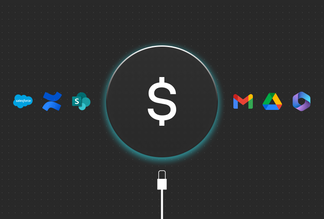
How do you onboard new joiners remotely?
Having a flexible working model is key in competing for and retaining talent. And while 47% of employees surveyed reported wanting to work from home full-time, 75% want the ability to decide their own working model.
If I take a step back to think about the most important aspects of distributed work, the list of things that come to mind are documentation, communication, trust, flexibility, and structure. And all of these things should be introduced in your remote onboarding.
- Setting up a remote onboarding program
- Remote onboarding step-by-step
- Tips for remote onboarding a new employee
- Consequences of poor onboarding
- Ways to get your onboarding experience right
- How Qatalog uses Qatalog for onboarding
Setting up a remote onboarding program
Do I really know what it takes to integrate someone into my team — and into my company and its culture — when they’re working in their own home in another city or country?
Onboarding is incredibly important, especially in the era of the Great Resignation — where a mass amount of knowledge workers are leaving their jobs to pursue other options. It takes time, money, and resources to search for and interview candidates. All that energy will be spent in vain if your onboarding doesn’t set up your new hires with the support they need.
Getting used to a company’s culture takes time. I remember it took me about a month to adjust to the async nature of Qatalog, but because of our detailed onboarding I was able to adjust to the learning curve and embrace it. This is why onboarding plays such a critical role in the success of a new hire; if an employee knows what to expect, they are much more likely to be successful.
With a remote onboarding workflow or program, assimilating into company culture becomes a little more complex. You’ll need to plan out the three steps of a remote onboarding program to ensure your new hire is supported from the moment they accept the job to the months after they’ve started.
Steps of remote onboarding:
-
Pre-onboarding
Remote onboarding doesn’t begin with a new hire’s day one. Managers should help new employees build excitement about the job from the moment they accept. Pre-onboarding also includes ordering any necessary equipment to send to your new hire. I coordinated with my manager at Qatalog a few weeks prior to joining to organize laptop pickup and order other equipment I needed for my home office.
Another great tip for pre-onboarding is to have other members of the team reach out via email. Building connections before day one will have a massive impact on those relationships, and it’s always nice to have some familiar faces in a new working environment, especially in a remote setting.
-
Orientation
Orientation is where new hires are formally introduced to the team and their supervisors. New hires also receive the documents and information they need to get started at orientation, such as employee handbooks, new employee paperwork, and an intro to the company mission.
Orientation usually takes about a week or two for remote new hires. What could be completed in a few days in an in-person onboarding course becomes super monotonous and, well, boring to do from home. Breaking up “formal” orientation with get-to-know-you video chats with people across the organization can help to break up that monotony.
-
30-60-90 plan
Developing a 30-60-90 day plan with a new employee not only gives them a chance to understand the goals of your team and company more deeply, but it’s also a great exercise to see how they collaborate with other team members. Do they ask a lot of questions? Do they prefer to work independently and then present to a manager for feedback? How do they take that feedback?
By developing company-aligned goals, you’ll help focus their efforts where they’re needed most. Employees will get up to speed on the organization’s mission and values and the skills and knowledge required to perform their role.
Onboarding also doesn’t stop at orientation. It’s important to provide a space for new employees to ask questions and express issues, doubts, and setbacks as they get used to a new company. Establishing check-ins within the first three months of employment is the perfect way to do just that.
Tips for remote onboarding a new employee
-
Have new hires introduce themselves to the team
Of course, any new hire introduction should be initiated by someone on the team - but at Qatalog, we also like to play a round of two truths and a lie so we can get to know our new hires a little better. These are always fun because we allow new hires to take the floor and see more of who they are.
If your company embraces the async model, try a video introduction that you can send to the entire team.
-
Help new hires build connections
It can be hard to learn who to go to with what question and find colleagues that double as friends from Zoom meetings alone. Setting up new hires with coffee chats in their first few weeks can help establish connections, sure. But hosting new hire events, or team events, deliberately within the first two weeks of an employee’s tenure familiarizes them to stakeholders in a stress-free environment.
-
Gather feedback on the process
Sending a new hire survey once your onboarding process is complete (some say 6 months is a good benchmark) will help you fill in the gaps and design a perfect onboarding experience. Everyone can benefit from learning where they need to improve.
Consequences of a poor onboarding experience
Remote or not, your onboarding experience is vital for establishing social and professional expectations, setting the tone of the company, and empowering new team members to make a positive connection with their colleagues and the organization.
Failing to check those boxes (at a minimum) could result in:
- Members struggling to integrate with the team: Leading to low morale, and feelings of abandonment, stress, and anxiety.
- Members leaning too heavily on their direct contact: Instead of giving someone the information they need during the onboarding process, new starters are left to discover for themselves. This can use up the bandwidth of their point of contact as they ask questions and get to grips with systems, tools, and processes.
- A high churn rate in the medium-term: If team members don’t feel any affinity towards their colleagues and your company, they’re less likely to be committed to your organization and may pursue other opportunities.
Remote team management: 4 ways to get your onboarding experience right
Okay, so it’s easy to get wrong, and poor onboarding can create a bad snowball effect. But we’re in the business of making things work. So, let’s take a look at what you need to do to get remote teamwork and remote communication right:
1. Write down a clear onboarding process and set expectations
Make sure new starters can hit the ground running by writing down a clear and simple pre-templated onboarding process. Host it in one place, include links to documents, an org chart, a team overview, and how-to guides for any productivity tools they need.
You should also set out clear expectations about working processes — for example, a new designer should know exactly what the product team is currently working on, and who will be depending on them for wireframes in the upcoming weeks and months.
New starters need a clear picture of their duties, and an understanding of their own objectives, team goals, and company values. To bring all this together, you’ll benefit from a cross-team shared workspace — one connected place where work gets shared.
2. Track the progress of new joiners throughout the onboarding process
Team leads and mentors shouldn’t simply assign the onboarding process and step away. Instead, this is the time to collaborate with your new hire to get a sense of how they work. Managers should also be able to track progress and intervene to help if needed.
This keeps team leads aware of any bottlenecks and means they can set each individual up for success in the unique way that they need. Everybody is different.
3. Improve the onboarding process
Building a remote onboarding process isn’t a once-and-done endeavor. You should constantly gather feedback from team members to evaluate, refine, and improve the process.
If you can learn what they find valuable and not-so-valuable, you will improve employee acquisition and retention over the long term.
Aim at refreshing your onboarding process on a quarterly basis — adapting to feedback quickly may help increase retention in the long run.
How Qatalog uses Qatalog for onboarding
At Qatalog, we use workflows to build a connected, transparent onboarding experience.
Everything in our onboarding workflows helps new Qataloggers to get set up with all the important information and tools they need. We’ve also broken down our onboarding workflows by country since we have different payment structures and taxes for each one.
As each new hire goes through the workflow, the person who assigned it can check in on progress. Employees can also skip steps in the onboarding and return to them later depending on what they want to focus on each day.
The bottom line for onboarding new remote staff
It’s the job of your onboarding process to immerse the new employee in the company’s vision, make valuable connections, and help them feel like they’re already part of the team. Even if they’re working from their kitchen table a thousand miles away.



